The United States Patent and Trademark Office published a patent application by Korean electronics giant, Samsung Electronics in May 2015. The patent application titled: Wearable Robot And Method For Controlling the Same, comes with 12 figures and was originally submitted on the 3rd of September 2014. The primary inventor is Chang Hyun ROH who has also worked with Samsung on design and control of a walking robot (2009). Samsung already has a robotics program and an upper body exoskeleton patent and now the company is investing more heavily into the exoskeleton systems market.
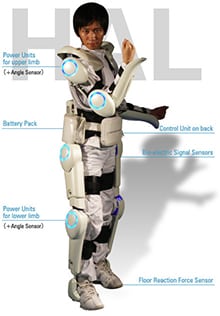
The Samsung patent application defines a wearable robot as a device that may include a gear part having an exoskeleton structure to be worn on the legs of the user and a sensor part including a first and second electromyogram (EMG) sensors attached at two different locations of at least one of the user’s legs. The patent application features figures and descriptions for both a full body exoskeleton and a hip-only exoskeleton. This approach to exoskeleton construction and control is very similar to the work done by another exoskeleton company, Cyberdyne (not the one from the Terminator films). Cyberdyne is the producer of the HAL series exoskeletons (again, not film related, no murderous robots here). Their research has had a tremendous influence in the exoskeleton field over the last decade and it can be seen in the Samsung’s wearable robot. Cyberdyne is a strong proponent of using EMG sensors to capture nerve impulses from the brain before they even reach the target muscle group allowing the exoskeleton motors to activate at the same time as the leg muscles. The main drawback of this technology is that implantable sensors beneath the skin are still not considered safe; EMG sensors have to be attached to the skin of the user. The sensors take time to apply and have high noise that increases as the binding gel starts to dry out (usually within the first 30 minutes). Samsung is a significantly larger company and their wearable robotics department may already have a solution to the sensors’ shortcomings.
Closer look at the patent application.
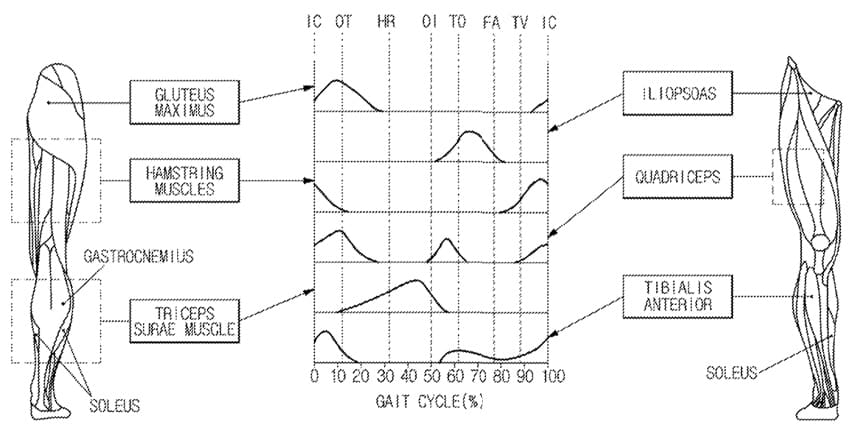
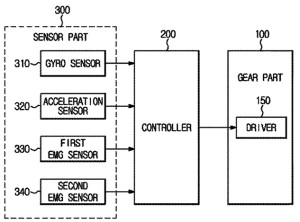
The wearable exoskeleton featured in the Samsung patent application is designed to enhance muscular power. It could be used to augment skeletal muscular power in the elderly or disabled, as part of a rehabilitation treatment or to support able-bodied users such as soldiers or workers in carrying heavy objects. The Samsung wearable robot needs to detect the intent of the user and relay that to the exoskeleton’s motors. This will be achieved using a combination of two EMG sensors at the tibialis anterior muscle, the soleus muscle or triceps surae muscle of the user. The patent application also notes that even though the hamstring muscle and quadriceps femoris muscle are activated at an initial state of walking, an EMG sensor may not be easily attached without the user experiencing discomfort. In addition, a gyro sensor that monitors inclination of the user’s upper body and an acceleration sensor to detect trunk inclination can also be employed. The EMG sensor package can be broken down into its components: electrode(s), amplifier, rectifier, filter, an analog-to-digital (A/D) converter and a transmitter. It is then up to the controller to interpret all of the sensor results and provide the torque requirements to the drive motors.
Samsung’s other robots.
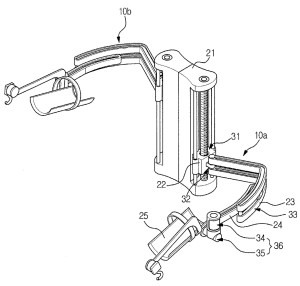
Samsung already has at least one filed exoskeleton patent: Compact Exoskeleton Arm Support Device to compensate for gravity, December 2010. It is unlikely that this device made it past the initial research and development phase. In Feb 2o15, Samsung created a new Robotics Lab Division to concentrate on drones, robots and 3D printing. Similar to Honda’s Asimo, Samsung has its own line of walking robots, MAHRU. Recently, Samsung released a robotic vacuum cleaner as well as an automated sentry gun SGR-1 that can detect and attack targets up to 2 miles away. With an increase in funding towards their robotics projects and a strong portfolio of already existing products, Samsung is extremely well positioned to enter the exoskeleton systems market.
If Samsung and Philips are making exoskeletons, what about Sony?
Since June of 2014, the Japanese government has been emphasizing a re-vitalization of their robotic industry through new investments and deregulation. Large Asian companies such as Honda, Philips and Daewoo are actively working on walking assist devices, power loaders and exoskeletons. In 1999, Sony awed both children and adults with the AIBO robot dog and in 2003 the company unveiled their walking robot, the QRIO. Even though Sony has faced some tough economic conditions over the past six years, wearable robotics could be an opportunity to re-kindle their innovative spirit.
Notes:
Visit the US Patent and Trademark Office website for more information on the Samsung’s wearable robot patent application (2015) #20150134080.
The Compact Exoskeleton Arm Support Device (2010) US20110164949 A1 can be found on Google patents search.
Special thanks to Patently Mobile – Samsung Invents a Human Wearable Robot to Give Soldiers and Industrial Workers Extra Strength for initially publicizing this story.
Thank you for reading!


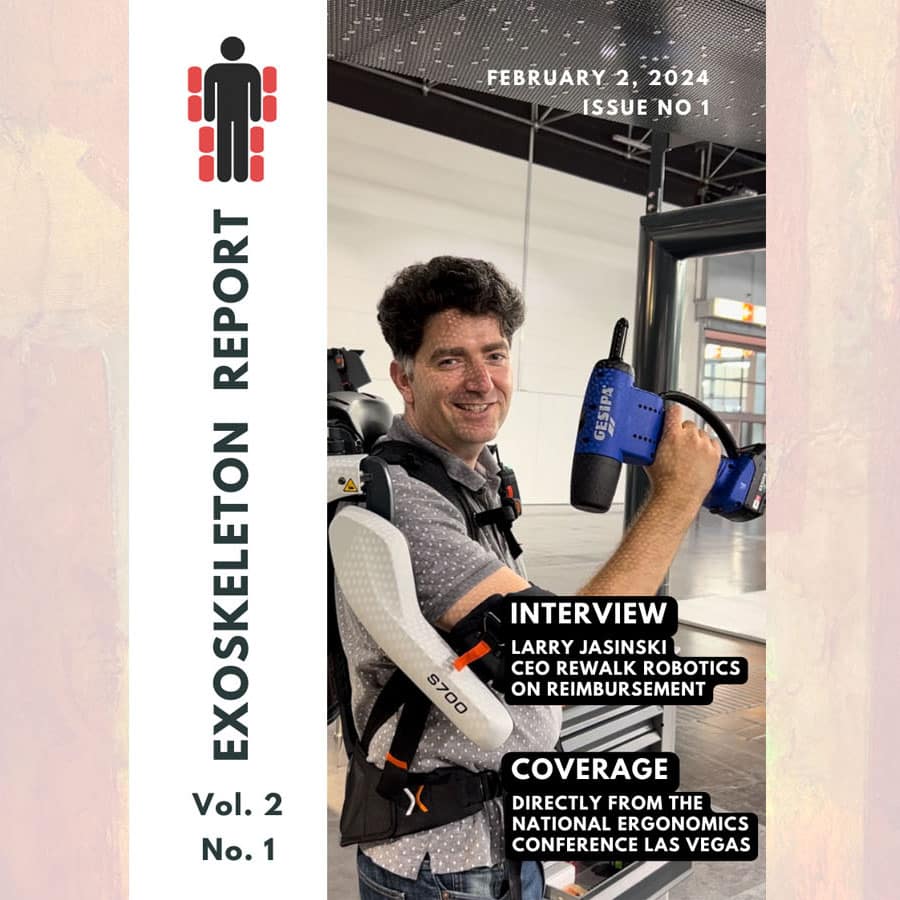
2 Comments